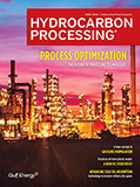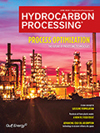Aemetis to supply Finnair with 17.5 MMg of SAF
Aemetis announced that an offtake agreement has been signed with oneworld Alliance airline member Finnair for 17.5 MMg of blended sustainable aviation fuel (SAF) to be delivered over the 7 year term of the agreement. The value of the contract including incentives is approximately $70 MM.
SAF provides significant environmental benefits compared to petroleum jet fuel, including a lower lifecycle carbon footprint and reduced contrails. The blended SAF to be supplied under this agreement is 40% SAF and 60% Petroleum Jet A to meet international blending standards.
“Finnair has set an ambitious long-term target to fly carbon neutral in 2045 and SAF is an important part of the toolkit for reaching this target. Supporting SAF adoption is key to boosting the supply and demand for SAF and for increasing its usage in commercial aviation. The agreement also underlines the oneworld Alliance’s commitment to collectively source SAF,” said Eveliina Huurre, SVP Sustainability at Finnair.
The SAF is expected to be produced by the Aemetis renewable jet/diesel plant under development on a 125 acre former U.S. Army Ammunition production plant site in Riverbank, California. The blended SAF is scheduled to begin deliveries to Finnair in 2025.
“The supply of sustainable aviation fuel to Finnair is a part of $2 B of contracts with oneworld Alliance members to reduce the environmental impact of aviation,” said Eric McAfee, Chairman and CEO of Aemetis. “Our production of low carbon aviation fuel in California is made possible by the historical success of the California Low Carbon Fuel Standard, creating new investment and jobs in disadvantaged minority communities in the state.”
Powered by 100% renewable electricity, the Aemetis carbon zero production plant at the Riverbank plant site is designed to sequester CO2 from the production process using injection wells, significantly reducing the carbon intensity of the renewable fuel.






Comments